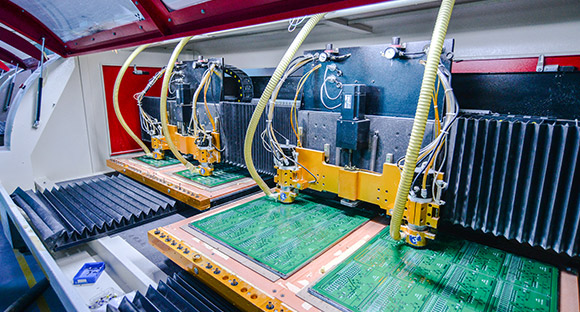
Support Team
Feedback:
support@nextpcb.comInside almost all electronic devices there is a Printed Circuit Board (PCB) fitted inside. There are a number of smaller devices/components on the surface of the board, Usually the most common method is to use the “Thru-hole technology method” in which components would be connected to the board via wire leads. That method is not applicable for small-sized devices in which multiple components have to be fitted on the board.
Since this method was not applicable for small devices so a new method called the “Surface Mount Technology method ” was invented, in which instead of using wire leads, the components are directly mounted on the surface of the boards. It is now the most effective and commonly used method in PCB manufacturing.
Due to the several beneficial features offered by Surface Mount (SMT) PCBs they have gained immense popularity in recent years. These PCBs are compact in size, and they also ideally meet the growing demand for smaller electronics.

As we mentioned before Surface Mount Technology(SMT) allows us to directly mount components onto the printed circuit board (PCB). Surface-mount devices (SMD) are the components that can be directly mounted onto the PCB. SMT is now more widely used and is more beneficial unlike thru-hole technology, but both technologies can also be used simultaneously on the same board. There are certain devices such as heatsinked power semiconductors and large transformers that are not suitable for surface mounting, and so are connected using thru-hole technology.
The general SMT assembly process includes:

Basically, a stencil is a sheet of stainless steel with cuttings. The cuttings are used as specifications where solder paste should be put and aligned with the components on the PCB. The amount of solder paste used should also be carefully calculated.
Solder paste is applied to one end of the stencil once it is set and squeezed using a squeegee. Once the solder paste is deposited the stencils are removed. Temperature-controlled rooms are required for the boards, after solder paste is applied components need to be moved until placement sets in.
Surface mount components (SMC) are picked up and placed via a pick-and-place machine. On the production line assembly kits are added to the machines (pick-a-place machines). These machines are programmed and designed to pick & place the components onto the PCB at a designated area. This process is usually automated but can also be done manually, although with lesser precision.
Reflow soldering, in this method a soldering machine is used the PCB boards along with solder paste and components, are passed through it. PCB board is passed through the machine which provides controlled heating which melts the solder and solidifies which in turn makes solid solder joints. The temperature must be carefully regulated so the board, so is not poorly soldered.
The final step is to inspect the PCB. After all the processes are done the PCB board is then cleaned and inspected to identify any faults or flows which may cause potential problems, if any problems are found they are then repaired or reworked on.
There are a number of advantages of SMT which make it the go-to method for PCB manufacturing and assembly.
Still, need help? Contact Us: support@nextpcb.com
Need a PCB or PCBA quote? Quote now
|
Dimensions: (mm) |
|
|
Quantity: (pcs) |
|
|
Layers: 2 |
Thickness: 1.6 mm |
|
|
|